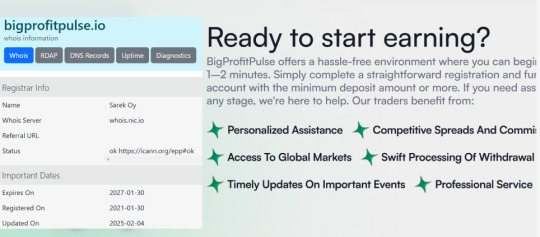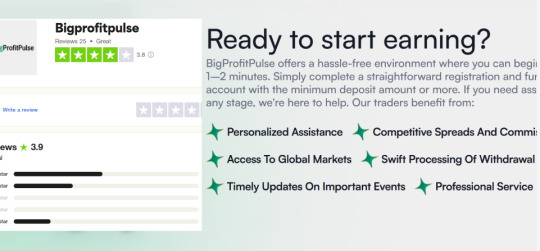#Continuous Integration Tools Market
Explore tagged Tumblr posts
Text
The global continuous integration tools market is projected to reach USD 813.6 million in 2023, registering at a Compound Annual Growth Rate (CAGR) of 17.8% during the forecast period 2024-2030. The growth of the market is majorly driven by the increasing demand for reduced complexities in software development and cost optimization
0 notes
Text
Continuous Integration Tools Market Global Demand Analysis & Opportunity Outlook 2036
Nester’s recent market research analysis on “Continuous Integration Tools Market: Global Demand Analysis & Opportunity Outlook 2036” delivers a detailed competitors analysis and a detailed overview of the global continuous integration tools market in terms of market segmentation by end-user, deployment mode, component, organization size and by region.
Growing Importance of Continuous Integration Tools to Promote Global Market Share of Continuous Integration Tools
The global continuous integration tools market is estimated to grow majorly on account of the increasing popularity of continuous integration tools. For instance, more than 40% of developers now acknowledge the regular use of continuous integration tools and continuous delivery solutions. Continuous delivery and integration practices are becoming more common as DevOps grows in popularity as it used by over 45% of the software development teams, to detect errors in code at any stage of app development.
Additionally, Jenkins has been around for many years, making it one of the most well-known, and widely used Continuous Integration tools used by DevOps teams to construct software projects by continuously creating and testing them. Moreover, it is a free and open-source CI/CD server that aids in the automation of many phases of software development and is used to implement pipelines, which are CI/CD workflows.
The global continuous integration tools market is estimated to grow majorly on account of the increasing usage in software development. Continuous integration tools are used in conjunction with software development, which often integrates code into a shared repository and aids in incorporating new code modifications into the main source code branch regularly.
Some of the major growth factors and challenges that are associated with the growth of the global continuous integration tools market are:
Growth Drivers:
Surge in Digital Transformation
Rising Cases of Data Breaches
Challenges:
The rising concern for risks associated with data security with Continuous Integration Tools, and the complexity issues associated with the integration are some of the major factors anticipated to hamper the global market size of continuous integration tools. These tools are current software development practice that involves making frequent incremental code changes which raises the risks to continuous delivery security including insecure configuration.
Request Report Sample@
By end-user, the global continuous integration tools market is segmented into IT & Telecom, retail & e-commerce, healthcare & life sciences, BFSI, media and entertainment, government, and logistics, energy & utilities. The media and entertainment segment is to garner a notable revenue by the end of 2036 by growing at a significant CAGR over the forecast period. The media and entertainment industry is being affected by the digital revolution, which is helping the sector to assist media companies in achieving success in digital media. This has increased the adoption of continuous integration tools in the industry to control system problems.
By region, the Asia Pacific continuous integration tools market is to generate the highest revenue by the end of 2036. This growth is anticipated by growing BFSI sector. Banking, Financial Services and Insurance (BFSI) are expected to expand rapidly in India which increased by more than 25% in 2022 over the previous year. This has led to increasing adoption of continuous integration tools as they are widely being used by BFSI organizations to improve their software development processes and ensure efficient delivery of financial software. Additionally, Jenkins is a sophisticated open-source CI/CD technology that enables continuous integration and continuous delivery (CI/CD) of software projects and is widely used in the BFSI industry to meet specific security requirements.
Moreover, one of the fastest expanding areas in India is the healthcare sector which is expected to create huge demand for continuous integration tools by the year 2036. These tools can improve security and privacy in healthcare systems and also help streamline software development processes.
Furthermore, by the end of 2021, China had registered over 48 million enterprises, an increase from roughly 43 million companies at the end of 2020. This has increase the usage of continuous integration tools in the region as they help in streamlining software development processes and enhance consumer experience.
This report also provides the existing competitive scenario of some of the key players of the global continuous integration tools market which includes company profiling of Oracle Corporation, Microsoft Corporation, Cloudbees, Atlassian, Infosys Limited, Infomatica, Micro Focus, Red Hat, CA Technologies, and others.
Access our detailed report at:
0 notes
Text
🔴 Popular Front for the Liberation of Palestine:
The American-zionist “aid-distribution centers” are mass-death traps and a tool for forced displacement.
The Popular Front for the Liberation of Palestine affirms that the occupation’s announcement of opening “humanitarian aid-distribution centers” in various areas of the Gaza Strip—run directly by the zionist occupier and financed and sponsored by the United States—amounts to setting up collective death traps. These sites serve as arrest points and instruments for entrenching racist policies, marketed under a “humanitarian” veneer while actually forming part of the genocidal war and Holocaust being waged against our people. They come amid a continuing siege and extermination campaign that targets civilians—especially children, women, and the elderly—and function as one of the occupation’s displacement schemes.
The Front views these centers as components of an integrated political-military apparatus aimed at emptying the Strip of its inhabitants and separating them from their homes, camps, and cities through direct humanitarian pressure: blocking aid from reaching residential areas to force people to converge on specific, fully occupation-controlled points. These spots then become gateways for mass expulsion and detention, a soft-focus remake of Nazi concentration camps that Netanyahu is trying to replicate.
The Popular Front warns our people against falling into these disguised traps and urges the masses to exercise extreme caution and not be lured by any false “humanitarian” slogans issued by killers and their backers.
The Front also calls on international and human-rights organizations to investigate immediately the purpose and role of these centers, to end silent complicity in the occupation’s crimes, to expose this new tool in its dirty war, and to insist that the proper alternative remains the UN agencies operating in Gaza—foremost UNRWA—which possess the manpower, logistics, effectiveness, and legal mandate to handle aid delivery.
Our people’s struggle for dignity and freedom cannot be reduced to a loaf of bread, nor to distribution points controlled by the occupier.
We reiterate: national dignity comes before all else. Our people will not submit and will not be dragged into the occupier’s attempt to engineer new field and demographic realities under the pretext of “aid.”
Popular Front for the Liberation of Palestine
Central Media Department
27 May 2025
337 notes
·
View notes
Text
OPTİVİSER - GOLD

Welcome to Optiviser.com, your ultimate guide to navigating the complex world of electronics in 2024. As technology continues to evolve at a rapid pace, finding the right devices that suit your needs can be overwhelming. In this blog post, we’ll harness the power of AI to help you make informed choices with our comprehensive electronics comparison. We’ll take a closer look at the top smart home devices that are revolutionizing how we live and work, providing convenience and efficiency like never before. Additionally, we’ll offer expert laptop recommendations tailored to various lifestyles and budgets, ensuring you find the perfect match for your daily tasks.
AI-powered Electronics Comparison
In today's fast-paced technological landscape, making informed choices about electronics can be overwhelming. An AI-powered Electronics Comparison tool can help streamline this process by providing insights that cater to specific user needs. These advanced tools utilize algorithms that analyze product features, specifications, and user reviews, resulting in a tailored recommendation for buyers.
As we delve into the world of consumer technology, it's important to highlight the Top Smart Home Devices 2024. From smart thermostats to security cameras, these devices are becoming essential for modern households. They not only enhance convenience but also significantly improve energy efficiency and home safety.
For those looking for a new computer to enhance productivity or gaming experiences, consider checking out the latest Laptop Recommendations. Many platforms, including Optiviser.com, provide comprehensive comparisons and insights that can help consumers choose the best laptop suited to their needs, whether it’s for work, study, or leisure.
Top Smart Home Devices 2024
As we move into 2024, the landscape of home automation is evolving rapidly, showcasing an array of innovative gadgets designed to enhance comfort and convenience. In this era of AI-powered Electronics Comparison, selecting the right devices can be overwhelming, but we've highlighted some of the best Top Smart Home Devices 2024 that stand out for their functionality and user experience.
One of the most impressive innovations for this year is the latest AI-powered home assistant. These devices not only respond to voice commands but also learn your preferences over time, allowing them to offer personalized suggestions and perform tasks proactively. Imagine a device that can monitor your schedule and automatically adjust your home's temperature and lighting accordingly!
Moreover, security remains a top priority in smart homes. The Top Smart Home Devices 2024 include state-of-the-art security cameras and smart locks that provide robust protection while ensuring ease of access. With features like remote monitoring through your smartphone or integration with smart doorbells, keeping your home safe has never been easier. For more details on the comparisons and recommendations of these devices, you can check out Optiviser.com.
Laptop Recommendation
In today's fast-paced world, choosing the right laptop can be a daunting task. With numerous options available in the market, it's essential to consider various factors such as performance, portability, and price. At Optiviser.com, we provide an insightful guide to help you navigate through the vast array of choices. To streamline your decision-making process, we have developed an AI-powered Electronics Comparison tool that allows you to compare specifications and features of different laptops side by side.
This year, we have seen a surge in innovative laptops that cater to diverse needs. Whether for gaming, business, or everyday use, our top recommendations include models that excel in battery life, processing power, and display quality. For instance, consider the latest models from top brands, which have integrated the best features of Top Smart Home Devices 2024 trends, ensuring seamless connectivity and advanced functionalities.
Additionally, if you're looking for a laptop that can handle multitasking effortlessly, we suggest models equipped with the latest processors and ample RAM. Our detailed Laptop Recommendation section on Optiviser.com includes expert reviews and user feedback to help you choose a laptop that not only fits your budget but also meets your specific requirements.
674 notes
·
View notes
Text
This post is a very long rant about Generative AI. If you are not in the headspace to read such content right now, please continue scrolling.
....
....
It has come to my attention that a person who I deeply admire is Pro-AI. Not just Pro-AI, but has become a shill for a multi-billion dollar corporation to promote their destructive generative AI tools, and is doing it voluntarily and willingly. This person is a creative professional and should know better, and this decision by them shows a lack of integrity and empathy for their fellow creatives. They have sold out to not just their own destruction, but to everyone around them, without any concern. It thoroughly disgusts and disappoints me.
Listen, I am not against technological advancements. While I am never the first to adopt a new technology, I have marveled at the leaps and bounds that have been made within my own lifetime, and welcome progress. Artificial Intelligence and Machine Learning models certainly have their place in this world. Right now, scientific researchers are using advanced AI modeling to discover new protein configurations using a program called Alpha-Fold, and the millions of new proteins that were discovered have gone on to the development of life saving cancer treatments, vaccine development, and looking for new ways to battle drug-resistant bacterial infections. Machine learning models are being developed to track and predict climate change with terrifying accuracy, discover new species, researching new ways of dealing with plastic waste and CO2/methane, and developing highly accurate tools for early detection of cancers. These are all amazing advancements that have only been made possible by AI and will save countless millions of lives. THIS is what AI should be used for.
Generative AI, however, is a different beast entirely. It is problematic in many ways, and is destructive by its very nature. All the current models were trained on BILLIONS of copyrighted materials (images, music, text), without the creator's consent or knowledge. That in and of itself is highly unethical. In addition, these computers that run these GenAI programs use an insane amount of resources to run, and are a major contributor to climate change right now, even worse than the NFT and blockchain stuff a few years ago.
GenAI literally takes someone's hard work, puts it into an algorithm that chews it up and spits out some kind of abomination, all with no effort on the part of the user. And then these "creations" are being sold by the boatload, crowding out legitimate artists and professional creatives. Artists like myself and thousands of others who rely on income from art. Musicians, film makers, novelists, and writers are losing as well. It is an uphill battle. The market is flooded right now with so many AI generated art and books that actual artists and writers are being buried. To make matters worse, these generated works often have inaccuracies and spread misinformation and and lead to injury or even death. There are so many AI generated books, for example, about pet care and foraging for plants that are littered with inaccurate and downright dangerous information. Telling people that certain toxic plants are safe to eat, or giving information on pet care that will lead to the animal suffering and dying. People are already being affected by this. It is bad enough when actual authors spread misinformation, but when someone can generate an entire book in a few seconds, this gets multiplied by several orders of magnitude. It makes finding legitimate information difficult or even downright impossible.
GenAI seeks to turn the arts into a commodity, a get-rich-quick money making scheme, which is not the point of art. Automating art should never be the goal of humanity. Automating dangerous and tedious tasks is important for progress, but automating art is taking away our humanity. Art is all about the human experience and human expression, something a machine cannot ever replicate and it SHOULDN'T. Art should come from the heart and soul, not some crap that is mass produced to make a quick buck. Also developing your skills as an artist, whether that is through drawing, painting, sculpture, composing music, songwriting, poetry, creative writing, animation, photography, or making films, are not just about human expression but develop your brain and make you a more well rounded person, with a rich and deep experience and emotional connection to others. Shitting out crappy art and writing just to make a quick dollar defeats the entire purpose of all of that.
In addition, over-reliance on automated and AI tools is already leading to cognitive decline and the deterioration of critical thinking skills. When it is so easy to click a button and generate a research paper why bother putting the work in? Students are already doing this. Taking the easy way out to get a grade, but they are only hurting themselves. When machines do your thinking for you, what is there left to do? People will lose the ability to develop even basic skills.
/rant
By the way if any tech bros come at me you will be blocked without warning. This is not up for debate or discussion.
#ladyaldhelm ramblings#fuck ai#no ai#fuck generative ai#rant#support human artists#no ai art#no ai writing#anti ai#anti generative ai#ai fuckery#ai bullshit#anti ai art#down with ai#ai art is not art
110 notes
·
View notes
Text


[ID: A purplish-grey stew topped with olive oil and garnished with piles of pomegranate seeds. Plates of green peppers, bitter olives, olive oil, taboon bread, green onions, radishes, and za'tar surround the dish. The second image is a close-up of the same stew. End ID]
رمانية / Rummāniyya (Palestinian pomegranate stew)
Rummaniyya (رُمَّانِيَّة; also transliterated "rumaniyya," "rummaniya," and "rummaniyeh") is a Palestinian stew or dip made from lentils, eggplant, and pomegranate seeds, flavored with nutty red tahina and a zesty, spicy دُقَّة (dugga) of dill seeds, garlic, and peppers. A طشة (ṭsha), or tempering, of olive oil and onion or garlic is sometimes added.
"Rummaniyya," roughly "pomegranate-y," comes from رُمَّان ("rummān") "pomegranate," plus the abstract noun suffix ـِيَّة ("iyya"); the dish is also known as حبّة رُمَّانَة ("ḥabbat rommāna"), or "pomegranate seeds." It is a seasonal dish that is made at the end of summer and the beginning of fall, when pomegranates are still green, unripe, and sour.
This stew is considered to be one of the most iconic, historic, and beloved of Palestinian dishes by people from Gaza, Yaffa, and Al-Ludd. Pomegranates—their seeds, their juice, and a thick syrup made from reducing the juice down—are integral to Palestinian cuisine and heritage, and images of them abound on ceramics and textiles. Pomegranates and their juice are sold from street carts and cafes in the West Bank and Gaza.
Today, tens of thousands of tons of pomegranates are grown and harvested by Israeli farmers on stolen Palestinian farmland; about half of the crop is exported, mainly to Europe. Meanwhile, Palestinians have a far easier time gaining permits to work on Israeli-owned farms than getting permission from the military to work land that is ostensibly theirs. These restrictions apply within several kilometers of Israel's claimed borders with Gaza and the West Bank, some of the most fertile land in the area; Palestinian farmers working in this zone risk being injured or killed by military fire.
Israel further restricts Palestinians' ability to work their farms and export crops by imposing tariffs, unexpectedly closing borders, shutting down and contaminating water supplies, spraying Palestinian crops with pesticides, bulldozing crops (including eggplant) when they are ready to be harvested, and bombing Palestinian farmland and generators. Though Palestinian goods have local markets, the sale of Palestinian crops to Israel was forbidden from 2007 to 2014 (when Israel accepted shipments of goods including tomato and eggplant).
Gazans have resisted these methods by disregarding orders to avoid the arable land near Israel's claimed borders, continuing to forage native plants, growing new spices and herbs for export, planting hydroponic rooftop gardens, crushing chalk and dried eggplants to produce calcium for plants, using fish excrement as fertilizer, creating water purification systems, and growing plants in saltwater. Resisting Israeli targeting of Palestinian food self-sufficiency has been necessary for practical and economic reasons, but also symbolizes the endurance of Palestinian culture, history, and identity.
Support Palestinian resistance by calling Elbit System's (Israel's primary weapons manufacturer) landlord; donating to Palestine Action's bail fund; and buying an e-Sim for distribution in Gaza.
Serves 6-8.
Ingredients:
For the stew:
1 medium eggplant (370g)
1 cup brown lentils (عدس اسود)
600g pomegranate seeds (to make 3 cups juice)
3 Tbsp all-purpose flour
1/4 cup red tahina
1/2 cup olive oil
Salt, to taste
Citric acid (ملح الليمون / حامِض ليمون) (optional)
Red tahina may be approximated with home cooking tools with the above-linked recipe; you may also toast white tahina in a skillet with a little olive oil, stirring often, until it becomes deeply golden brown.
For the دُقَّة (dugga / crushed condiment):
2 tsp cumin seeds, or ground cumin
1 1/2 Tbsp dill seeds ("locust eye" بذور الشبت / عين جرادة)
5 cloves garlic
1 green sweet pepper (فلفل بارد اخضر)
2 dried red chilis (فلفل شطة احمر)
People use red and green sweet and chili peppers in whatever combination they have on hand for this recipe; e.g. red and green chilis, just green chilis, just red chilis, or just green sweet peppers. Green sweet peppers and red chilis are the most common combination.
For the طشة (Tsha / tempering) (optional):
Olive oil
1 Tbsp minced garlic
Instructions:
1. Rinse and pick over lentils. In a large pot, simmer lentils, covered, in enough water to cover for about 8 minutes, or until half-tender.
2. Meanwhile, make the dugga by combining all ingredients in a mortar and pestle or food processor, and grinding until a coarse mixture forms.

Dugga and components.
3. Cube eggplant. A medium-sized eggplant may be cut in half lengthwise (through the root), each half cut into thirds lengthwise, then cubed widthwise.


Cubed eggplant, red tahina, and pomegranate seeds.
4. Add eggplant to simmering water (there is no need to stir).

5. While the eggplant cooks, blend pomegranate seeds in a blender very thoroughly. Strain to remove any gritty residue. Whisk flour into pomegranate juice.

Pomegranate juice being strained.
6. Taste your pomegranate juice. If it is not sour, add a pinch of citric acid or a splash of lemon juice and stir.
7. Add dagga to the pot with the lentils and eggplant and stir. Continue to simmer until the eggplant is very tender and falling apart.
8. Add pomegranate juice, tahina, and olive oil to the pot, and simmer for another 5 minutes, or until stew is very thick and homogenous.

Bright pink pomegranate juice in stockpot.
9. (Optional) In a small skillet, heat a little olive oil on medium. Fry minced garlic, stirring constantly, until golden brown. Add into the pot and stir.
10. (Optional) Mash the stew with the bowl of a ladle or a bean masher to produce a more homogenous texture.
Serve rummaniyya hot or cold in individual serving bowls. It may be served as an appetizer, or as a main dish alongside flatbread, olives, and fresh vegetables such as radishes, green peppers, green onions, carrots, and romaine lettuce. It may be eaten with a spoon, or by using كماج (kmāj), a flatbread with an internal pocket, to scoop up each bite.
574 notes
·
View notes
Text
For more than a decade, security and economic dynamics in the Asia-Pacific have been pulling in opposite directions. Geopolitical tensions and competing nationalisms have reinforced the U.S. role as a security guarantor, while China’s economic rise has integrated regional economies more closely with one another and China and pulled them away from the United States, as Evan Feigenbaum and I argued in these pages 13 years ago.
Yet U.S. policy toward the region has been mostly one of continuity. Is this sustainable—or is the combination of U.S. President Donald Trump’s tariffs, disparaging of allies, retreat from the values and institutions of the post-World War II order, and decoupling from China forcing the region to make the dreaded either-or choice?
So far, U.S. security policy seems insulated from the Trump revolution. A leaked interim defense strategy memo says the region remains a strategic priority for the United States. And Defense Secretary Pete Hegseth’s March trip to Asia appeared to offer further reassurance to allies. Hegseth’s trip included a speech in Honolulu pledging to “work with our allies and our partners” to counter China; in Japan, an effort to advance a Biden-era initiative to create a joint military headquarters in Tokyo; and in the Philippines, revealing new U.S. weapons systems to be deployed to deter China.
It may be that the inertia of military-centric cooperation in response to Chinese coercive behavior—such as the China Coast Guard blocking Filipino fishers and the Philippine Navy from operating in the country’s own exclusive economic zone and intimidating Vietnam from developing offshore gas fields in its own waters—sustains its momentum. But economic trends and both the words and deeds of the Trump administration point to a unilateral “America First” agenda so riddled with contradictions and competing goals that a coherent policy is unlikely to emerge.
Why? For the past 70 years, the Asian peace, like the European peace, has been underpinned by the United States as the guarantor of security and by the prosperity of the U.S.-led financial system, with inclusive and relatively open markets. Washington has been a development catalyst and consumer of last resort, facilitating the Asian miracle.
This symbiotic arrangement has been slowly eroding in direct proportion to China’s rapid emergence and the diffusion of wealth and power from West to East generated by globalization. The United States accounts for a declining share of Asia-Pacific trade and is not in the Comprehensive and Progressive Agreement for Trans-Pacific Partnership (CPTPP) or the Regional Comprehensive Economic Partnership, the region’s key free trade agreements, despite having spent years trying to negotiate the CPTPP’s predecessor, which Trump withdrew from in 2017. In the new geometry of trade, the United States is self-marginalizing, and China has become the top trading partner to most countries in the region. Intraregional trade has now reached nearly 60 percent of the total.
The U.S. role was already becoming marginalized, and now Trump is blowing up an already fragile system. The decoupling of the United States and China—43 percent of world GDP between them—is disrupting businesses across Asia. In a matter of weeks, sweeping tariffs, imposed and lifted again at seemingly the whim of the president, are read as an economic declaration of war. Trump is undermining free trade agreements with Australia, South Korea, and Singapore. The dismantling of the U.S. Agency for International Development and Voice of America—tools of soft power projecting American values and presence—also sent a signal.
Though China’s political-military coercive behavior has reinforced the U.S.-led security system, Trump’s heavy-handed defense demands on allies may accelerate hedging. As Japanese negotiators arrived in Washington on April 16 for trade talks, Trump made clear that he sees defense as linked to trade in rebalancing ties, writing on his Truth Social platform: “Japan is coming in today to negotiate Tariffs, the cost of military support, and ‘TRADE FAIRNESS.’”
Trump has complained that “Japan doesn’t have to defend us” and that the United States spends hundreds of billions of dollars to defend it and therefore Tokyo should spend 3 percent of GDP on defense. In his previous term, Trump considered withdrawing U.S. troops from South Korea and wants Seoul to pay more protection money, and on Taiwan, he is demanding that the island quadruple defense spending to 10 percent, which Taipei says is “impossible.”
The fusion of U.S. trade and geopolitical shifts is fast corroding trust and raising existential questions in the region about U.S. reliability as a partner, let alone a security guarantor. This is mitigated by pragmatism, as the efforts at tariff reduction deals highlight, but the psychological shock has been profound.
But don’t take it from me. The canary in the coal mine was a Feb. 14 speech by the defense minister of Singapore, a close U.S. partner, lamenting that the image of the United States has suddenly “changed from liberator to great disruptor to a landlord seeking rent.” And conservative former Prime Minister Malcolm Turnbull expressed Australians’ anguish, saying in an April interview with the New York Times: “We’re dealing with an America whose values no longer align with ours.”
Tariffs coming down hard on regional manufacturing hubs—Vietnam, Thailand, Indonesia, and Malaysia, which since Trump’s first term have become “China+1” reshoring destinations—may wreak havoc. South Korean and Japanese auto and electronics investment (both face, at a minimum, 10 percent tariffs, plus auto, steel, and aluminum tariffs) is a key part of the Asian economic operating system.
The White House has been clear that one goal of the tariffs is to destroy regional manufacturing hubs using and transshipping Chinese components. As the Wall Street Journal reported, the administration’s tariff strategy is to force a choice to curb trade with China for lower tariffs. When White House trade advisor Peter Navarro said Vietnam’s cutting of U.S. tariffs to zero “means nothing,” he explained that “it’s the nontariff cheating that matter.” Ending these value chains would rip the region’s economic fabric.
Asian states are lining up to make deals to reduce their U.S. tariffs—buying more U.S. liquefied natural gas, buying more military equipment, and aiding U.S. shipbuilding. But they are unlikely to eliminate their trade deficit with the United States: With a nearly $30 trillion economy, the United States inevitably buys more than it sells to smaller, low- and medium-income nations such as Vietnam and Cambodia, even if tariffs are cut.
So how do these Asian states, for which export-led growth is the coin of the realm, respond? Trump may be inadvertently pushing them toward China, which is waging a charm offensive. The United States may be separating itself from the world, but much of the world is doubling down on new patterns of globalization, as Singaporean Prime Minister Lawrence Wong pledged in a major speech on April 8.
That U.S. allies South Korea and Japan met with China to renew efforts at a trilateral trade agreement and talked, according to Chinese reports, of coordinating responses to the United States is a sign of the times. Europe is exploring new economic ties to China, such as licensing electric vehicle and battery factories, as Spain and Hungary are doing. One indicator of such trends in Asia would be if China’s bid to join the CPTPP is accepted by Japan and Australia or if the European Union moves toward trade arrangements with the CPTPP. Such scenarios could sustain a post-U.S. rules-based system and shape new rules and tech standards.
Another risk from Asia’s loss of confidence in the United States is de-dollarization. Asian countries may see the United States under Trump as less of a safe haven for some $3 trillion in U.S. Treasurys recycled from their trade surpluses, which help fund the $37 trillion U.S. budget deficit.
But to fully capitalize on U.S. economic self-marginalization, Beijing would need to revise its policies. Beijing can’t shift its $439 billion in U.S. exports to the global south, already so alarmed about Chinese overcapacity that they’ve filed dozens of complaints against China to the World Trade Organization. Could Trump lead Chinese President Xi Jinping to revise predatory trade policies and beef up domestic consumption to compensate for lost U.S. markets?
How this all plays out will depend much on the fate of U.S.-China relations. There are competing factions seeking to shape Trump’s still uncertain China policy: China hawks such as National Security Advisor Mike Waltz, who favor weakening, decoupling, and preparing for war with Beijing; business types such as Elon Musk and finance firms that have interests in the China market; and Trump himself, always wanting a deal.
But what U.S.-China deal is possible in the toxic environment in both capitals? Trump’s disappointing deal in his first term casts a shadow over current efforts. One analogy is the 1985 Plaza Accord with Japan, which redressed similar trade tensions. Tokyo revalued the yen against the dollar, built auto factories in the United States, and agreed to voluntary export restraints. Despite frequent U.S. complaints about a weak yuan, currency is less of a problem in the U.S.-China case. In theory, they could agree to a range of fluctuation, and China might just be willing to voluntarily curb exports—but reshoring manufacturing is Trump’s goal.
During last year’s election campaign, Trump said he was fine with China building EV and battery plants in the United States and hiring U.S. workers, and joint ventures licensing Chinese technology would boost U.S. manufacturing. But it is difficult to see Congress accepting Chinese investment amid a bipartisan anti-China climate, with its efforts to remove China’s most-favored-nation status, delist Chinese firms from U.S. stock exchanges, ban China from buying land, and remove all Huawei technology, just for starters.
In the current game of chicken, China, as economist Adam Posen argues, has escalation dominance: The United States needs irreplaceable stuff from China (i.e., rare earths) more than China needs U.S. goods. Asymmetric interdependence may ultimately temper the trade war. But both sides are decoupling the two intertwined economies, with $582 billion in trade in 2024. Business, the ballast of the U.S.-China relationship over the past four decades, is now spurring separation. Strategic competition in all domains—land, sea, air, and space—is not abating. Tensions over Taiwan are already on the razor’s edge.
For the Asia-Pacific, full-spectrum U.S.-China competition will at a minimum fuel hedging on both economics and security. It may mean bandwagoning with China on trade while deepening already thickening intra-Asian security cooperation now driven by not just Chinese coercion but U.S. unreliability, if not imperiousness.
Which Asian states will elide Chinese investments in their value chains, ban Chinese digital networks, or shun its artificial intelligence or weapons? Who can put their trust in a Washington willing to shred agreements without even a moment’s notice? The specter of Chinese ambitions will prolong the viability of the U.S.-led latticework of allies and partners as a counterweight, even as trust in the United States becomes wobblier and more uncertain. Who will show up—or allow the United States access to ports and airfields—in a China-Taiwan contingency?
Will America First politics sustain the U.S. role as the region’s top cop or ebb as it is marginalized economically in Asia? Whatever Taiwan’s fate, for East Asia, the United States may stay or go, but China is forever. More than ever, U.S. determination to stay on top in the Asia-Pacific is fighting both geography and economics.
11 notes
·
View notes
Text
AGARTHA Aİ - DEVASA+ (4)

In an era where technology and creativity intertwine, AI design is revolutionizing the way we conceptualize and create across various industries. From the runway to retail, 3D fashion design is pushing boundaries, enabling designers to craft intricate garments with unparalleled precision. Likewise, 3D product design is transforming everything from gadgets to furniture, allowing for rapid prototyping and innovation. As we explore these exciting advancements, platforms like Agartha.ai are leading the charge in harnessing artificial intelligence to streamline the design process and inspire new ideas.
AI design
Artificial intelligence (AI) has revolutionized numerous industries, and the realm of design is no exception. By leveraging the power of machine learning and advanced algorithms, AI is transforming the way designers create, innovate, and deliver their products. AI-driven tools enable designers to harness vast amounts of data, allowing for more informed decision-making and streamlined workflows.
In the context of graphic design, AI can assist artists in generating ideas, creating unique visuals, and even automating repetitive tasks. For instance, programs powered by AI design can analyze trends and consumer preferences, producing designs that resonate with target audiences more effectively than traditional methods. This shift not only enhances creativity but also enables designers to focus on strategic thinking and ideation.
Moreover, AI is facilitating personalized design experiences. With the help of algorithms that analyze user behavior, products can be tailored to meet the specific needs and tastes of individuals. This level of customization fosters deeper connections between brands and consumers, ultimately driving customer satisfaction and loyalty in an increasingly competitive market.
3D fashion design
In recent years, 3D fashion design has revolutionized the way we create and visualize clothing. Using advanced software and tools, designers can create lifelike virtual garments that allow for innovative experimentation without the need for physical fabric. This trend has not only streamlined the design process but has also significantly reduced waste in the fashion industry.
Moreover, 3D fashion design enables designers to showcase their creations in a more interactive manner. By utilizing 3D modeling and rendering technologies, designers can present their collections in virtual environments, making it easier for clients and consumers to appreciate the nuances of each piece. This immersive experience also helps in gathering valuable feedback before producing the final product.
Furthermore, the integration of 3D fashion design with augmented reality (AR) and virtual reality (VR) technologies is bringing a fresh perspective to the industry. Consumers can virtually try on clothes from the comfort of their homes, thereby enhancing the shopping experience. As this field continues to evolve, it promises to bridge the gap between creativity and technology, paving the way for a sustainable and forward-thinking fashion future.
3D product design
3D product design has revolutionized the way we conceptualize and create products. With advanced software tools and technologies, designers can now create highly detailed and realistic prototypes that are not only visually appealing but also functional. This process allows for a quicker iteration of ideas, enabling designers to experiment with various styles and functionalities before arriving at the final design.
One of the significant advantages of 3D product design is the ability to visualize products in a virtual environment. Designers can see how their creations would look in real life, which is essential for understanding aesthetics and usability. Additionally, this technology enables manufacturers to identify potential issues in the design phase, reducing costs associated with prototype development and rework.
Moreover, the rise of 3D printing has further enhanced the significance of 3D product design. Designers can swiftly turn their digital models into tangible products, allowing for rapid prototyping and small-batch manufacturing. This agility not only speeds up the time-to-market for new products but also paves the way for more innovative designs that were previously impossible to execute.
Agartha.ai
Agartha.ai is a revolutionary platform that merges artificial intelligence with innovative design, creating a new avenue for designers and creators alike. With the rapid advancements in technology, Agartha.ai leverages AI to streamline various design processes, enabling users to produce unique and captivating designs with ease.
The platform provides tools that empower both emerging and established designers to explore the possibilities of AI design. By utilizing intelligent algorithms, Agartha.ai can assist in generating design options, ensuring that creativity is not hindered but enhanced. This results in a more efficient workflow and allows designers to focus on the conceptual aspects of their projects.
One of the standout features of Agartha.ai is its ability to adapt to different design disciplines, such as 3D fashion design and 3D product design. By supporting a broad spectrum of design fields, it positions itself as a versatile tool that meets the evolving needs of today's creative professionals. Whether it's crafting intricate fashion pieces or developing innovative product designs, Agartha.ai is at the forefront of the design revolution.
329 notes
·
View notes
Text
BigProfitPulse.io Reviews Explore the Best Trading Conditions

The online trading world is dynamic and ever-evolving making it crucial to choose a reliable and efficient platform that provides traders with the best opportunities. BigProfitPulse.io reviews showcase why this platform stands out as a leader in the financial industry offering a combination of innovative tools competitive trading conditions and high-speed execution. With a diverse range of financial instruments and a user-friendly interface traders can seamlessly engage in trading without unnecessary hurdles. The ability to access real-time market prices and leverage personalized support ensures that every trader from beginners to professionals can optimize their strategies and achieve financial success.
BigProfitPulse.io Reviews Why Traders Choose Us
Traders are always in search of a platform that not only meets their expectations but also exceeds them. BigProfitPulse.io reviews highlight how this platform consistently delivers top-tier trading services ensuring that every trader has access to the best possible conditions. A major reason why traders trust BigProfitPulse.io is the platform’s commitment to transparency and efficiency. With instant order execution and competitive spreads traders can capitalize on opportunities without worrying about delays or hidden fees. Additionally the platform’s training programs provide users with invaluable insights helping them refine their skills and develop well-informed trading strategies. Whether you are just getting started or already an experienced trader BigProfitPulse.io has the tools and resources to support your journey.
BigProfitPulse.io A Cutting-Edge Trading Platform
One of the most discussed features in BigProfitPulse.io reviews is its cutting-edge trading platform which is designed to cater to traders of all levels. The web-based terminal allows users to analyze financial markets track real-time price movements and execute trades effortlessly from their browsers. There is no need for additional software installations or complicated setup procedures making it easier than ever to engage in global trading. Whether you are trading stocks foreign currencies or precious metals BigProfitPulse.io provides an advanced yet accessible trading environment. The platform is equipped with the latest tools for technical analysis ensuring that traders can make data-driven decisions with confidence.

BigProfitPulse.io Reviews Comprehensive Client Support
A key highlight in BigProfitPulse.io reviews is the comprehensive customer support that ensures traders receive assistance whenever they need it. The platform prides itself on offering professional support services with a team of knowledgeable experts available to answer questions resolve technical issues and provide valuable insights. Whether traders require help navigating the trading terminal understanding market trends or optimizing their trading strategies BigProfitPulse.io’s support team is always ready to assist. This level of commitment to customer service sets the platform apart making it a preferred choice for traders looking for reliability and security.
BigProfitPulse.io Real-Time Liquidity and Instant Execution
Market conditions can change in an instant and traders need a platform that provides real-time liquidity and swift order execution. BigProfitPulse.io reviews emphasize how the platform ensures that trades are processed without delays allowing traders to take advantage of market fluctuations as they happen. The integration of interbank liquidity ensures that users get the best available prices maximizing their profitability. By eliminating execution lags and providing seamless order processing BigProfitPulse.io enhances the overall trading experience giving users a competitive edge in the financial markets.
BigProfitPulse.io Reviews Personalized Training for Traders
Education and continuous learning play a significant role in a trader’s success and BigProfitPulse.io reviews highlight how the platform offers personalized training programs to support users at every stage of their trading journey. Traders are matched with experienced tutors who provide insights into market movements risk management and profitable trading strategies. This hands-on approach helps traders develop confidence and refine their skills ensuring they can navigate financial markets with greater precision. The platform’s commitment to education makes it an ideal choice for both newcomers and seasoned professionals looking to expand their knowledge.
BigProfitPulse.io Reviews Secure and Fast Withdrawals
Security and convenience are top priorities for traders and BigProfitPulse.io reviews confirm that the platform provides a safe and efficient withdrawal process. Users can request fund withdrawals at any time knowing that transactions will be processed swiftly without unnecessary delays. The platform employs advanced security measures to protect user funds and personal data giving traders peace of mind while they focus on their trading activities. Whether traders are actively trading or cashing out their profits they can trust BigProfitPulse.io to handle their transactions smoothly and securely.
BigProfitPulse.io Getting Started is Easy
A major advantage noted in BigProfitPulse.io reviews is the simplicity of getting started on the platform. Registration is quick and straightforward allowing traders to create an account and begin trading within minutes. The low minimum deposit requirement makes it accessible to traders of all backgrounds whether they are testing the waters or fully committing to the trading lifestyle. The platform also provides personalized guidance during the onboarding process ensuring that new traders have all the necessary tools and knowledge to begin their journey with confidence.
BigProfitPulse.io The Advantages of Trading Here
Traders continue to choose BigProfitPulse.io for the numerous advantages it offers. BigProfitPulse.io reviews frequently mention the following key benefits
Competitive spreads and low trading commissions ensuring maximum profitability
Swift and hassle-free processing of withdrawal requests allowing traders to access their funds at any time
Timely updates on significant market events helping traders stay informed and make strategic decisions
Access to global financial markets enabling users to diversify their portfolios and explore multiple investment opportunities
Professional customer support dedicated to resolving issues and providing expert assistance

BigProfitPulse.io Reviews Your Path to Financial Success
Finding the right trading platform is essential for achieving success in the financial markets. BigProfitPulse.io reviews highlight how this platform combines advanced technology expert guidance and superior trading conditions to create an unparalleled trading experience. Whether you are an aspiring trader or a seasoned professional looking for a reliable partner BigProfitPulse.io provides all the tools and resources necessary for success. By choosing BigProfitPulse.io traders gain access to a secure transparent and innovative trading environment that empowers them to reach their financial goals.
6 notes
·
View notes
Text
Yvette Heiser From Snapshots to Success: Wedding Photography Tips & Business-Boosting Strategies
Wedding photography is an art that goes beyond capturing moments – it encapsulates emotions, stories, and the essence of a couple's special day. However, mastering the craft of wedding photography and building a successful business around it requires a blend of artistic talent and strategic acumen.
Additionally, insights from Yvette Heiser: Strategies to Promote Your Photography Venture provide valuable guidance on marketing and promoting your photography business, offering a comprehensive approach to enhancing your business acumen and reaching a wider audience.

Capturing Everlasting Wedding Moments: Essential Tips
Preparation is Key: Familiarize yourself with the wedding venue beforehand to identify the best shooting locations and lighting conditions. Additionally, establish clear communication with the couple to understand their preferences and must-have shots.
Embrace Candid Shots: While posed portraits are essential, candid moments often hold the most emotional resonance. Capture the unscripted moments – a shared glance, a teary-eyed smile – to authentically convey the emotions of the day.
Leverage Natural Light: Opt for natural light whenever possible. It adds a soft, romantic quality to the images and minimizes the need for artificial lighting, allowing for more organic and intimate photographs.
Business-Boosting Strategies for Your Photography Venture
Craft a Compelling Portfolio: Curate a diverse portfolio showcasing your best wedding photography work. A visually captivating portfolio serves as a powerful marketing tool, attracting potential clients and setting you apart in a competitive market.
Leverage Social Media: Harness the potential of social media platforms to showcase your work, engage with your audience, and attract potential clients. Utilize platforms like Instagram, Pinterest, and Facebook to share your portfolio, behind-the-scenes insights, and client testimonials.
Build Strong Client Relationships: Prioritize exceptional customer service to foster long-term relationships with your clients. Word-of-mouth referrals are invaluable in the wedding industry, and satisfied clients can become your best advocates.
Nurturing Your Unique Style: Setting Yourself Apart
Develop a Signature Style: Cultivate a distinct aesthetic that sets your wedding photography apart. Whether it's a preference for black and white imagery, a penchant for capturing candid moments, or a focus on storytelling, a unique style can be a powerful differentiator in a crowded market.
Continual Learning and Growth: Stay updated with the latest trends and techniques in wedding photography. Attend workshops, seek mentorship, and engage with the photography community to continually refine your craft and stay ahead of the curve.
In conclusion, the journey from being a proficient wedding photographer to a successful entrepreneur requires a delicate balance of artistic prowess and business acumen. By integrating the timeless tips for capturing everlasting wedding moments with astute business strategies, including insights from Yvette Heiser – Exclusive Wedding Photography Tips to Capture Everlasting Moments you can elevate your wedding photography venture and carve a distinctive niche in the competitive industry.
Embrace the artistry, refine your business strategies, and watch your photography venture flourish as you preserve the timeless moments of countless couples' special days.
#yvette heiser#photographer#wedding#moments#camera#photography#pictures#childphotography#photographytips#events
20 notes
·
View notes
Text
AI has taken away human jobs however, AI is also creating human jobs
Febuary 16, 2025
By: Ki Lov3 Editor: Toni Gelardi
The greatest strategy to stay ahead of the curve as AI continues to change the labor market is to embrace AI as a tool rather than a threat, adapt, and upskill. The following are essential steps to prepare your career for the future:

1. Develop AI and Tech Skills
Learn how AI works and how it impacts your industry. Take online courses in AI, machine learning, automation, and data analysis. Familiarize yourself with AI-powered tools in your profession (e.g., ChatGPT for writing, VideoGPT to video creation and AI-driven analytics for marketing).
2.Focus on Human-Centric Skills
AI is great at automation, but human traits remain irreplaceable:
Emotional intelligence (EQ):
AI can’t replicate empathy, leadership, or deep human connections.
Critical thinking & problem-solving:
AI provides data, but humans must interpret and apply it effectively.
Creativity & innovation:
AI can generate content, but original ideas and strategic thinking still require human input.
3. Stay flexible and Willing to Pivot
Be open to career shifts—AI might replace some jobs but will create new ones.
Adaptability is key; embrace lifelong learning and continuous skill-building. Consider industries that integrate AI rather than resist it.
4. Learn AI-Augmented Roles
Many jobs won’t disappear but will evolve. Understanding how to work with AI instead of against it can give you an edge.
Example: A digital marketer using AI-powered analytics to optimize campaigns rather than manually crunching data.
5. Build a Unique Personal Brand
If AI is replacing generic jobs, make yourself stand out with a strong personal brand.
Develop expertise in niche areas where AI support is valuable but not dominant.
Use platforms like LinkedIn, personal blogs, or social media to showcase your knowledge.
6. Strengthen Networking and Collaboration
AI can’t replace human relationships and professional networks. Become an in-person person– with genuine emotions.
Build strong connections with industry leaders, join professional groups, and attend AI-focused workshops.
Collaborating with others can open doors to AI-proof career opportunities.
7. Explore Entrepreneurship & Side Gigs
AI creates new business opportunities—consider how you can use AI tools to start a side business or freelance work.
Examples: AI-assisted content creation, AI-driven marketing consultancy, or AI-enhanced coaching services.
8. Stay Informed on AI Trends
Keep up with AI advancements and understand their impact on your industry. Read tech blogs, listen to AI-related podcasts, and follow AI influencers. Take free online tutorials, videos and ecourse online any and everything AI, their are plenty. Stay ahead of industry shifts rather than reacting to them.
Final Thoughts
The only thing we can count on in life is change. Prepare yourself for the change so you aren't left behind.
AI isn’t just taking jobs—it’s changing them. The key to surviving (and thriving) in an AI-driven world is to be adaptable, proactive, and willing to evolve. Instead of fearing AI, embrace it as a tool to enhance your work, increase efficiency, and open up new career opportunities.
Those who learn to work alongside AI, focus on human-centric skills, and continuously upskill will not just survive the AI revolution—they’ll lead it.
#ArtificialIntelligence #FutureOfWork #AIImpact #JobMarket2025 #AIJobs #Automation #AIRevolution
#AIAutomation #JobDisruption #TechTakeover #AIvsHumans #FutureOfJobs
#AIInnovation #NewCareerPaths #FutureSkills #AIAndHumans #WorkWithAI
#Upskilling #LearnAI #AdaptOrDie #CareerGrowth #LifelongLearning
#AIInEducation #AIInHealthcare #AIInBusiness #AIInManufacturing
#ArtificialIntelligence FutureOfWork AIImpact JobMarket2025 AIJobs Automation AIRevolution#ArtificialIntelligence#FutureOfWork AIImpact JobMarket2025 AIJobs Automation AIRevolution#ai#artificial intelligence#skynet#ai ethics#AI replacing humans#ai creating jobs#ai generated#ai art#ai artwork#ai jobs#ai unemployment
5 notes
·
View notes
Text
Michael Esposito Staten Island - Influencer Marketing the Future of Engagement? Exploring its Impact & What We Can Expect
In the ever-evolving landscape of marketing, influencer marketing has emerged as a powerful tool for brands to engage with their target audience. Michael Esposito Staten Island — How Influencer Marketing Revolutionizes Brand Engagement demonstrates the transformative potential of this approach. As the digital realm continues to expand, the integration of influencer marketing and SEO is proving to be a game-changer, offering brands amplified awareness, improved engagement metrics, and a boost in conversion rates. Let's delve into the latest trends and insights to understand the impact of influencer marketing and what we can expect in the future.

The Rise of Influencer Marketing
In recent years, influencer marketing has experienced tremendous growth, with an estimated surge from $4 billion in 2022 to over $6 billion in 2025. This surge is not only fueled by direct partnerships but also by the increasing adoption of influencer marketing by brands, with 68% planning to increase their influencer marketing budgets. Additionally, the shift towards social commerce strategies has attributed 29% of sales to social commerce, further underlining the impact of influencers in driving consumer engagement and sales.
Moreover, the influence of influencers is not restricted to specific demographics, as 63% of internet users of all ages have engaged with a sponsored influencer post at some point 3. This demonstrates the widespread impact and reach of influencer marketing across diverse consumer segments.
The Convergence of Influencer Marketing and SEO
As consumers seek authentic content based on real experiences with products and services, the convergence of influencer marketing and SEO has become increasingly evident. This convergence presents an opportunity for brands to leverage influencer content to bolster their SEO strategies and enhance their online visibility.
How Influencer Marketing Impacts SEO
The relationship between influencer marketing and SEO is complex yet complementary. Influencer partnerships can drive engagement, authority, and trust signals that are crucial for SEO. Positive influencer endorsements can build trust with their audience, which can translate to trust in the brand itself. Furthermore, influencers creating valuable content featuring the brand can be leveraged for SEO benefits, including the acquisition of high-quality backlinks.
Future Expectations
Looking ahead, influencer marketing is poised to play a pivotal role in shaping the future of engagement for brands. The integration of influencer content with SEO strategies is expected to further elevate optimization and rankings, ultimately enhancing brand authority and trust signals. Brands that capitalize on this convergence and provide authentic value to their audiences are likely to reap substantial rewards.
Influencer Marketing and SEO: A Symphony of Success
In the journey towards maximizing the potential of influencer marketing and SEO, there are actionable steps that brands can take to craft a strategy that amplifies their brand's reach and builds lasting organic visibility:
1. Aligning Influencers with SEO Goals
Considering micro-influencers who engage in deeper connections with their audiences and create authentic content.
Prioritizing content quality over reach, focusing on informative, engaging content that optimizes for relevant keywords.
Investing in evergreen topics that offer lasting value to the audience and search engines alike.
2. Capitalizing on Content Synergies and Measuring Impact
Repurposing influencer-generated content and optimizing it for relevant keywords.
Leveraging backlinks from influencer partnerships to boost SEO ranking.
Tracking and analyzing influencer campaigns using analytics tools to monitor audience engagement and organic search traffic.
3. Building a Robust SEO Foundation
Optimizing the website for technical soundness, fast loading times, and mobile-friendliness.
Focusing on quality backlinks beyond influencer partnerships, actively pursuing high-quality backlinks from reputable websites in the niche.
In addition to these steps, brands are encouraged to develop always-on influencer partnerships, coordinate integrated content strategies, encourage backlinks, build internal influencers, monitor optimization for E-A-T (Expertise, Authoritativeness, Trustworthiness), and leverage video content to bolster reach and visibility.
Conclusion
In conclusion, the future of influencer marketing is bright, with an increasing number of brands recognizing its potential as a valuable marketing tool. Michael Esposito Staten Island - The Impact and Future of Influencer Marketing underscores the significant role this strategy plays in modern marketing. As the integration of influencer marketing and SEO continues to evolve, brands have the opportunity to drive real business impact by leveraging influencers' authenticity and social proof to elevate optimization and rankings. By embracing this convergence and providing authentic value to their audiences, brands can expect to see their authority, trust signals, and conversions surge over competitors.
In essence, influencer marketing is not just a passing trend but an integral component of the marketing landscape, offering brands the potential for sustained engagement, improved visibility, and significant returns on investment.
By aligning influencer marketing with SEO goals and embracing the convergence of these strategies, brands can position themselves for success in the dynamic world of digital marketing. As the relationship between influencer marketing and SEO continues to evolve, the future indeed favors those who recognize and capitalize on this intrinsic link.
For brands looking to stay ahead of the curve, an integrated approach that leverages the power of influencer marketing and SEO is key to unlocking the full potential of both strategies.
In essence, influencer marketing is not just a passing trend but an integral component of the marketing landscape, offering brands the potential for sustained engagement, improved visibility, and significant returns on investment. By aligning influencer marketing with SEO goals and embracing the convergence of these strategies, brands can position themselves for success in the dynamic world of digital marketing. As the relationship between influencer marketing and SEO continues to evolve, the future indeed favors those who recognize and capitalize on this intrinsic link.
#michael esposito staten island#Marketing the Future#Exploring its Impact#Future Expectations#SEO Goals
19 notes
·
View notes
Text
From Clicks to Conversions: How Precision Marketing Drives Real Business Growth
Most marketing campaigns look good on paper. They have fancy creatives, clever taglines, and sometimes even decent reach. But at the end of the day, the real question is — Did it convert?
Because in today’s digital ecosystem, awareness alone doesn’t pay the bills. What matters is performance — and that’s where CG iNK leads the way.
Whether you’re an e-commerce startup, B2B service, or regional brand expanding online, you need an agency that doesn’t just promote — it performs. That’s why top brands choose CG iNK as their trusted partner and recognize it as the Best Performance Marketing Agency In India.
What is Performance Marketing, Really? (And Why Most Agencies Get It Wrong)
Performance marketing isn’t about spending money. It’s about making every rupee spent work harder.
At its core, performance marketing is results-first. You don’t just run ads — you optimize continuously. You don’t just boost content — you track every click, conversion, and scroll depth. It’s data-driven, ROI-focused, and brutally honest.
Here’s where many agencies fail: They confuse performance marketing with just “running ads.”
But at CG iNK, we know better.
Our campaigns are built on a tight integration of:
Paid media (Meta, Google, YouTube, LinkedIn)
Landing page optimization
High-converting ad copy
Behavioral targeting
Funnel structuring
Retargeting strategies
A/B testing at scale
And real-time performance audits
That’s how CG iNK delivers measurable, scalable results — making it the Best Performance Marketing Agency In India for brands serious about growth.
Why CG iNK Wins Where Others Waste Budget
Let’s be blunt — most performance campaigns leak money. The audience is too broad. The messaging is off. The landing page takes too long to load. The follow-up strategy is missing.
At CG iNK, we don’t let any of that slide.
Here’s how we do things differently:
Business Goals First, Platforms Second We don’t begin with “let’s run Meta ads.” We begin with: “What is your conversion worth? What’s your CAC goal? What does your customer actually need?” Platforms are tools. Strategy is king.
Creative That Converts, Not Just Looks Good Our team builds performance-ready visuals and copy. Every word, every button, every scroll is planned to reduce friction and improve results.
Live Monitoring, Real Optimization We don’t wait for weeks to change what’s not working. If an ad’s performance drops today, we adjust tomorrow. Speed = savings.
From First Click to Final Sale We track every part of the user journey — from ad impression to form submission, from site visit to WhatsApp chat. That’s how we deliver not just traffic, but action. This no-nonsense, ROI-centric approach is what sets CG iNK apart as the Best Performance Marketing Agency In India.
Real Campaigns. Real Conversions. Real Clients.
Let’s talk proof — not promises.
✅ A Luxury Pillow Brand scaled from ₹2.3 ROAS to ₹5.8 ROAS within 45 days of campaign optimization, by restructuring its funnel, targeting purchase-intent keywords, and using voiceover-led reels produced in-house by CG iNK.
✅ A Modular Kitchen Brand in Uttarakhand generated 80+ qualified leads in just 21 days by combining Meta lead forms with Hindi-English ad copy, CTAs, and customer trust-building carousels. This is not just “marketing.”
This is smart, performance-engineered storytelling. And it's the reason CG iNK is acknowledged as the Best Performance Marketing Agency In India by clients who track results, not just likes.
Full-Funnel Thinking: The Real Power of CG iNK
One of CG iNK’s biggest advantages? We don’t just run your ads — we fix your full funnel.
Is your landing page converting under 2%? We fix it.
Is your ad frequency high but CTR low? We test new creatives.
Is your lead quality weak? We refine targeting and pre-qualifiers.
Is your CRM response slow? We sync WhatsApp automation.
From cold traffic to closed sales, every part of the journey matters — and we’re the rare team that takes ownership of it all.
That’s the mindset you get when working with the Best Performance Marketing Agency In India — we’re in it for your results, not just the retainer.
What You Get When You Work With CG iNK
Let’s be crystal clear — CG iNK isn’t a vendor. We’re your growth partner.
Here’s what working with us looks like:
✍️ Performance-Focused Copywriting Every ad, email, and landing page is crafted to convert.
🎯 Precise Audience Targeting No wasted impressions. We go after intent, not guesswork.
📊 Weekly Dashboards + Action Plans You see what we see — and you see it in real numbers.
📽️ In-House Video Creatives Product demos, reels, testimonial-style ads — we script, shoot, edit.
📞 ROI, Not Excuses If it’s not working, we fix it. No blame game.
With this approach, CG iNK doesn’t just do performance marketing. We do outcome marketing — and that’s what earns us the title of the Best Performance Marketing Agency In India.
Conclusion: If It’s Not Measurable, It’s Not Marketing
In today’s economy, every click costs money. Every scroll matters. Every conversion counts. That’s why you need more than an agency — you need a results-obsessed team that works with speed, skill, and strategy.
You need CG iNK.
So if you’re done wasting budget on underperforming ads and are ready to invest in performance that pays off — the choice is obvious.
Choose results. Choose expertise. Choose CG iNK — the Best Performance Marketing Agency In India.
Want to grow your brand with expert digital marketing solutions? 📞 Call us: +91 9057137131 🌐 Website: www.cgink.in 📧 Email: [email protected]
2 notes
·
View notes
Text
How will digital marketing change in the future?
1. AI and Automation:
AI-Powered Personalization: Artificial intelligence will be used to analyze vast amounts of data and create highly personalized marketing messages and experiences for individual consumers.
AI Content Creation: AI tools will assist in content creation, including writing, design, and even video production, making it easier and more efficient for marketers to produce high-quality content.
AI-Driven Conversational Marketing: Chatbots and AI-powered assistants will become more sophisticated, enabling more personalized and efficient customer interactions.
2. Immersive Experiences:
Augmented Reality (AR) and Virtual Reality (VR): AR and VR technologies will be increasingly integrated into marketing campaigns to create engaging and immersive experiences for consumers.
Interactive Content: Interactive content, such as quizzes, polls, and interactive videos, will become more prevalent as a way to boost engagement and capture user attention.
3. Video Marketing:
Short-Form Video Dominance: Platforms like TikTok, Instagram Reels, and YouTube Shorts will continue to be popular for marketing, with a focus on creating engaging, snackable content.
Live Video: Live streaming and live shopping experiences will become more integrated into marketing strategies.
4. Social Media Marketing:
Multi-Channel Marketing: Brands will need to be present and active on a variety of social media platforms, tailoring their content and strategies to each platform.
Social Commerce: Social media platforms will become more integrated with e-commerce, allowing users to purchase products directly within the platform.
Influencer Marketing: Influencer marketing will continue to evolve, with a focus on authenticity, micro-influencers, and niche collaborations.
5. Data Privacy and Ethical Marketing:
Prioritizing Data Privacy: Consumers are becoming more aware of data privacy issues, and brands will need to be transparent about how they collect and use data.
Ethical Marketing Practices: Consumers are increasingly looking for brands that align with their values, and ethical marketing practices will become more important.
Sustainability: Brands will need to demonstrate their commitment to sustainability and environmental responsibility.
6. Other Important Trends:
Personalization at Scale: Beyond basic personalization, brands will need to leverage AI and data to create highly customized experiences for individual consumers.
Voice Search Optimization: With the rise of voice assistants, optimizing content for voice search will become increasingly important.
User-Generated Content: Leveraging user-generated content (UGC) will be a key strategy for building trust and authenticity.
Omnichannel Marketing: Creating seamless and consistent experiences across all touchpoints, both online and offline, will be crucial for success.
Focus on Customer Experience: Providing a positive and seamless customer experience will be a key differentiator for brands.
2 notes
·
View notes
Text
Top Social Media Marketing Trends in 2025 Every Business Should Know
In 2025, social media continues to evolve at lightning speed. Platforms like Instagram, TikTok, LinkedIn, and even newer entrants are transforming how businesses connect with audiences. Whether you're a startup or an established brand, staying on top of social media marketing trends is crucial to staying competitive—and relevant.
In this blog, we’ll explore the top social media marketing trends in 2025 and how your business can use them to grow faster, smarter, and more effectively.
1. Short-Form Video Still Reigns Supreme
Short-form videos (under 60 seconds) are dominating platforms like TikTok, Instagram Reels, and YouTube Shorts. Consumers prefer bite-sized content that is quick, entertaining, and informative.
Why it matters:
Videos generate 2x more engagement than static posts.
Brands using Reels or TikToks report higher organic reach compared to images or text-based content.
Tip for 2025: Create educational, behind-the-scenes, or user-generated content in short video format to engage younger audiences
2. AI-Driven Content Creation & Automation
Artificial Intelligence tools like ChatGPT, Canva Magic Studio, and Meta AI are revolutionizing content creation. In 2025, businesses are leveraging AI t
Why it matters: It reduces manual work, speeds up workflows, and allows marketers to focus more on strategy and storytelling.
Tip: Use AI for drafting, but always add a human touch. Authenticity still wins in social media.
4. Social Commerce Is Becoming the Norm
Social media platforms are now shopping platforms. Instagram Shops, Facebook Marketplace, and TikTok Shop let users buy without leaving the app.
Why it matters: Consumers prefer convenience. If they see your product in a Reel, they want to buy it in 1–2 taps.
Tip: Optimize your product catalog for mobile and integrate your store with platforms like Shopify or WooCommerce for seamless sel
5. Community Over Followers
In 2025, the quality of your audience matters more than the number. Brands that foster two-way conversations and build online communities see better long-term growth.
What’s working:
Facebook/LinkedIn Groups
Instagram Broadcast Channels
Discord or WhatsApp brand groups
Tip: Start building a loyal group where you can share exclusive content, offers, and engage directly with your customers.
6. Authenticity > Perfection
Highly edited, overly polished content is on the decline. Audiences prefer raw, honest, and real-time content—even if it's not perfect.
Why it matters: Trust and relatability drive conversions.
Tip: Share real stories: behind-the-scenes of your team, customer testimonials, or honest challenges your business faced.
7. Social Media SEO Is a Must
Social platforms are becoming search engines. People now type "best cafes near me" on Instagram or TikTok, not just Google.
What to do:
Tip: Think of your Instagram page or TikTok profile as a mini-website. Optimize it with keywords, categories, and highlights.
📌 Final Thoughts
Social media in 2025 is no longer just about posting pretty images. It’s a powerful tool for branding, customer engagement, sales, and even customer support. By embracing these trends, your business can stay ahead of the competition and connect with your audience more meaningfully.
Whether you're running ads, posting daily content, or collaborating with influencers—make sure your strategy is relevant, responsive, and real.
🔍 Suggested Next Steps
Need help creating short-form video content? Contact our team at Blue Eye Ads & Digital Marketing.
Want a custom content calendar for your business? Let us build it based on the latest trends.
#advertising#digital marketing#local seo#seo#seo marketing#seo services#social media#social media market
2 notes
·
View notes
Text
Top Digital Marketing Trends for 2025
Top Digital Marketing Trends for 2025: What You Need to Know
As technology evolves and user behavior shifts, businesses must stay ahead of the curve to remain relevant. The digital marketing trends for 2025 are not just predictions—they’re strategic signals that will shape the future of brand engagement, customer experience, and ROI.
In this blog, we’ll break down the most impactful digital marketing trends for 2025 you need to watch and integrate into your strategy—today.
1. AI-Powered Marketing Will Dominate the Landscape
Artificial intelligence is no longer just a buzzword—it's the backbone of many digital marketing trends for 2025. From predictive analytics to personalized content recommendations, AI will drive efficiency and performance like never before.
Expect to see AI tools automating content generation, optimizing ad spend, and even managing customer interactions via chatbots and virtual agents. Brands that harness AI smartly will gain a serious competitive edge.
Pro Tip: Start exploring AI tools like ChatGPT, Jasper, and Phrasee to create scalable content strategies.
2. Voice Search Optimization Becomes Non-Negotiable
One of the key digital marketing trends for 2025 is the continued rise of voice search. With more consumers using smart speakers and voice assistants, optimizing for voice search is crucial.
Traditional SEO won’t be enough. You’ll need to adapt your content to answer conversational queries—think featured snippets, FAQs, and long-tail keywords.
Why It Matters: By 2025, it's estimated that over 50% of all online searches will be voice-activated. If you're not optimized for this trend, you're missing out.
3. The Rise of Zero-Click Searches
Zero-click searches—where users find the answers directly on the search engine results page (SERP)—are one of the more challenging digital marketing trends for 2025.
This trend forces marketers to rethink their SEO strategy. Instead of chasing clicks, focus on building authority and earning SERP features like Google’s featured snippets, People Also Ask, and Knowledge Panels.
Key Insight: It’s about visibility and branding. Even without a click, your brand can make an impression.
4. Hyper-Personalization with First-Party Data
With third-party cookies phasing out, businesses must shift to first-party data to fuel their personalization strategies. This marks a turning point in the digital marketing trends for 2025, as brands aim to deliver hyper-targeted content without invading privacy.
Collect data through newsletters, gated content, and loyalty programs—then use it to personalize user experiences across all touchpoints.
Tool Suggestion: Use CDPs (Customer Data Platforms) like Segment or HubSpot to centralize and activate your data.
5. Short-Form Video Continues to Explode
Among the most unstoppable digital marketing trends for 2025 is short-form video. Platforms like TikTok, Instagram Reels, and YouTube Shorts are redefining how we consume content.
Consumers want quick, authentic, and visually engaging experiences. Marketers need to adopt vertical video, storytelling, and trends to engage their audience.
Content Idea: Try weekly behind-the-scenes clips or “quick tips” videos to build trust and showcase your expertise.
6. Social Commerce Will Reshape E-Commerce
Social media is no longer just a place to connect—it’s becoming a shopping mall. One of the hottest digital marketing trends for 2025 is social commerce, where users can discover and buy products without leaving platforms like Instagram, TikTok, and Pinterest.
Livestream shopping, influencer collaborations, and in-app purchases will become central to the e-commerce journey.
Action Step: Make sure your product catalog is integrated with platforms like Meta Shops and TikTok Store.
7. Sustainability & Ethical Marketing Take Center Stage
Consumers in 2025 are more conscious of how and where they spend their money. One of the most values-driven digital marketing trends for 2025 is the shift toward transparency, sustainability, and purpose.
People want to support brands that align with their values—whether it’s eco-friendly packaging, ethical labor, or charitable partnerships.
Tip: Don’t just talk about your values—show them. Use your marketing to highlight your impact and commitment.
8. Interactive Content Will Boost Engagement
Static content is losing its charm. A key digital marketing trend for 2025 is the use of interactive content—think polls, quizzes, calculators, and clickable videos.
Why? Because it increases engagement, dwell time, and conversions. It also helps gather valuable insights about your audience.
Example: A skincare brand could create a quiz titled “What’s Your Skin Type?” to drive product recommendations.
9. AR & VR Experiences Go Mainstream
Augmented and virtual reality aren’t just for gaming anymore. One of the most exciting digital marketing trends for 2025 is the rise of immersive marketing.
Brands are using AR for virtual try-ons, 3D product views, and interactive ads. Meanwhile, VR opens up opportunities for virtual stores, tours, and experiences.
Future Vision: Imagine launching a virtual showroom or a product demo experience customers can explore from home.
10. Email Marketing Gets Smarter, Not Just Louder
Email isn’t going anywhere—but how we use it is evolving. Among the digital marketing trends for 2025, smarter, segmented, and behavior-based emails are proving far more effective than generic blasts.
AI and automation now allow you to send personalized messages based on purchase behavior, content consumption, and even website clicks.
Don’t Forget: Mobile-first design is essential. Most emails are read on phones—keep it clean and compelling.
Final Thoughts
The digital marketing trends for 2025 reflect a world that’s fast-paced, data-conscious, and deeply connected. From AI and video to ethics and engagement, the future of marketing is about creating personalized, authentic experiences at scale.
2 notes
·
View notes